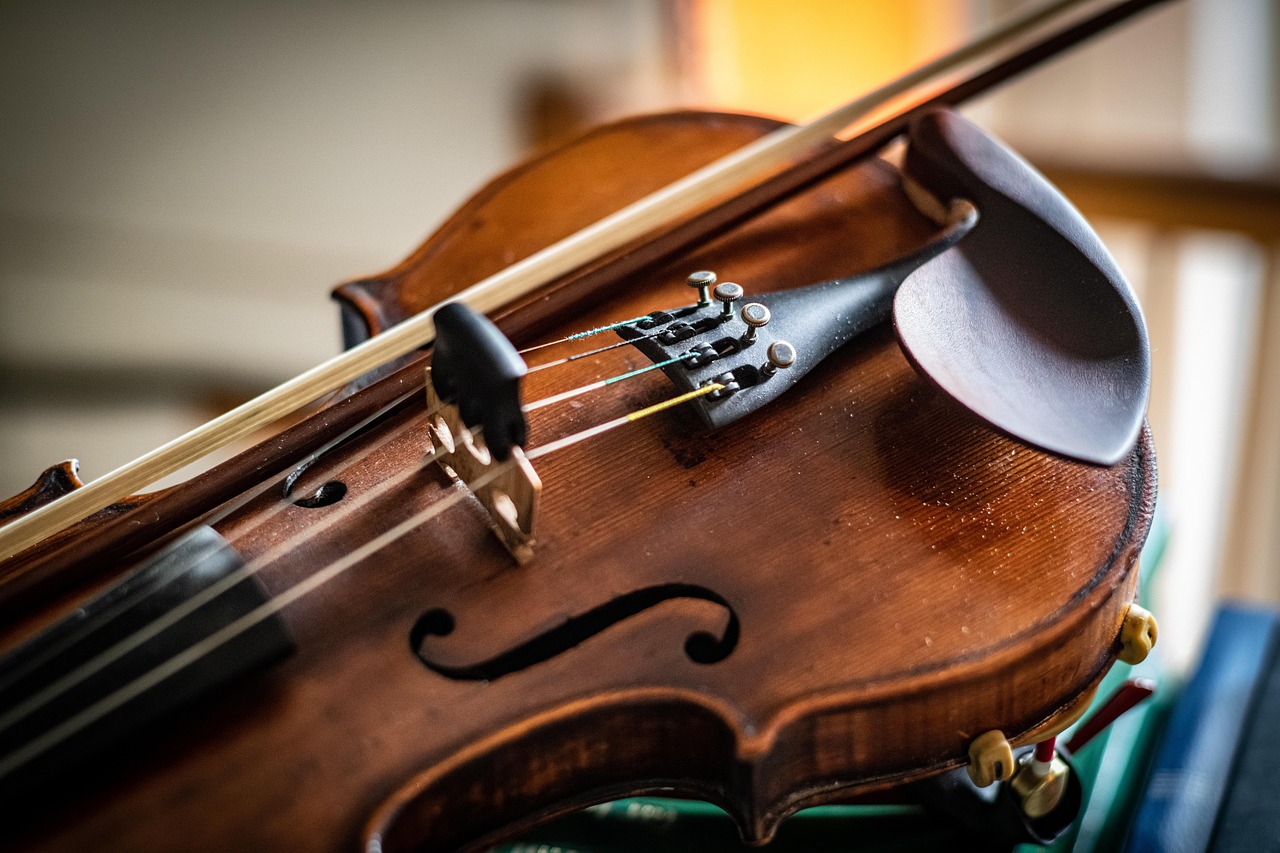This article contains affiliate links. Learn more.
The violin, often referred to as the “queen of instruments,” has captivated audiences for centuries with its warm, expressive tone and remarkable versatility. Whether you’re a beginner embarking on your musical journey, an intermediate player looking to upgrade, or an advanced violinist seeking the perfect instrument, choosing the right violin is a deeply personal and significant decision.
In this comprehensive guide, we’ll explore the world of violins, focusing on the best violin brands available today, high-quality violin string brands that can transform your sound, the fascinating mechanics behind how violins work, and important considerations regarding violin costs. Our goal is to provide you with trustworthy, expert information that will guide you toward making an informed decision when purchasing your next violin.
The violin market spans from quality student models to priceless antiques created by legendary luthiers. Understanding the differences in craftsmanship, materials, sound characteristics, and value propositions among various brands will help you navigate this complex landscape with confidence.
If you’re interested, check out our article on how violins work.
Table of Contents
- 1 Understanding Violin Quality Factors
- 2 How Violins Work: The Science of Sound
- 3 Best Violin Brands for Beginners
- 4 Best Intermediate Violin Brands
- 5 Professional and Premium Violin Brands
- 6 Top Violin String Brands
- 7 Understanding Violin Costs
- 8 Choosing the Right Violin for Your Needs
- 9 Violin Accessories Worth Considering
- 10 Caring for Your Violin
- 11 FAQ: Common Questions About Violins
- 11.1 How do I know when it’s time to upgrade my violin?
- 11.2 Are older violins always better than new ones?
- 11.3 How much should I spend on my first “serious” violin?
- 11.4 Can I try before I buy when purchasing online?
- 11.5 How do I know if a violin is properly set up?
- 11.6 Are carbon fiber violins worth considering?
- 11.7 How often should violin strings be changed?
- 11.8 Is it better to rent or buy a beginner violin?
- 11.9 Can I mix different brands of violin strings?
- 11.10 How much does bow quality affect my sound?
- 12 Conclusion
Understanding Violin Quality Factors
Before diving into specific brands, it’s essential to understand what makes a quality violin. The factors that contribute to a violin’s quality are numerous and interconnected, creating a complex equation that determines both sound quality and playability.
Wood Quality and Selection
The type and quality of wood used in violin construction significantly impact the instrument’s sound. High-quality violins typically feature:
- Spruce tops (soundboards): Ideally aged for 5-10 years, with straight, even grain
- Maple backs, sides, and necks: Providing strength and beautiful aesthetic qualities
- Ebony fingerboards: Offering durability and smooth playability
Premium violins often use wood that has been naturally air-dried for years or even decades, allowing the internal structure to stabilize and produce superior resonance characteristics.
Craftsmanship and Construction
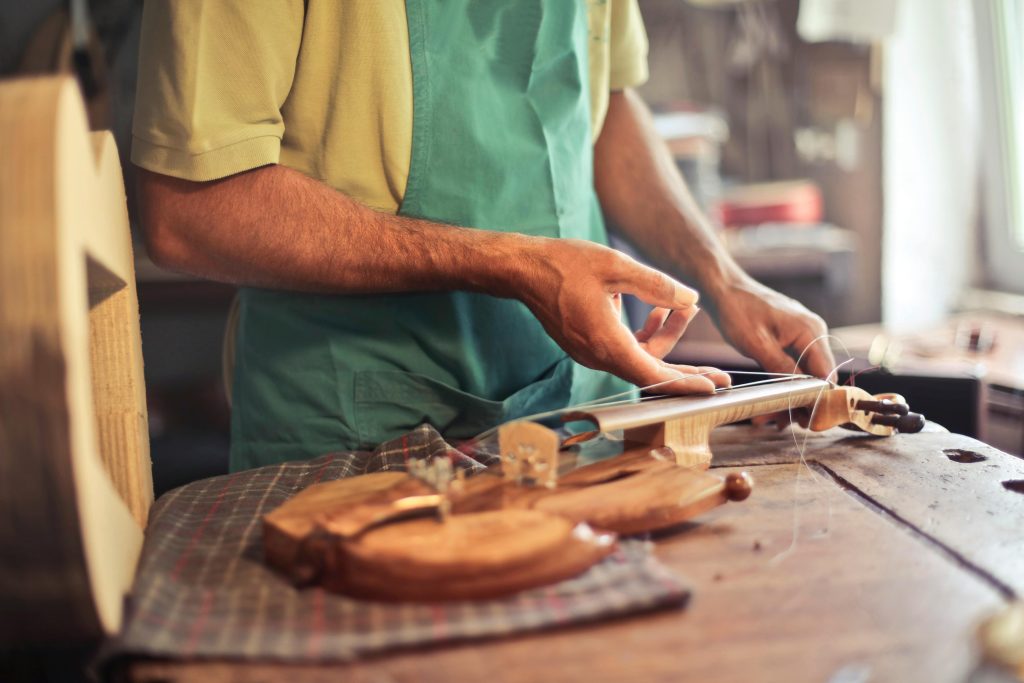
The skill of the luthier (violin maker) dramatically affects the instrument’s quality. Key craftsmanship elements include:
- Precision carving: Especially in the graduation (varying thickness) of the top and back plates
- Perfect fitting of parts: Ensuring optimal transfer of vibrations throughout the instrument
- Careful assembly: Including proper fitting of the soundpost and bass bar
- Meticulous setup: Including bridge fitting, string spacing, and action height
Hand-crafted violins made by skilled luthiers typically outperform factory-made instruments because of the attention to detail and customization involved in the building process.
Varnish Quality
While primarily aesthetic, varnish also affects a violin’s sound by interacting with the wood’s natural vibrations. Quality violins feature:
- Oil-based varnishes: Allowing the wood to vibrate freely
- Thin application: Protecting the wood without dampening vibrations
- Proper aging: Well-cured varnish that doesn’t continue to change over time
Many premium luthiers guard their varnish recipes closely, as they represent a crucial component of their violin’s signature sound and appearance.
Sound Characteristics
A high-quality violin should have:
- Balance across all strings and positions
- Clear articulation and responsive playing characteristics
- Projection capability for performance settings
- Complexity of tone with rich overtones
- Consistency of sound quality throughout the register
Each violin has its own voice, and determining what constitutes a “good sound” is somewhat subjective. However, these fundamental qualities are generally recognized as indicators of excellence.
How Violins Work: The Science of Sound
Understanding how violins produce their captivating sound can help you appreciate the differences between various brands and models. We go into more depth on this here.
The Basic Mechanics
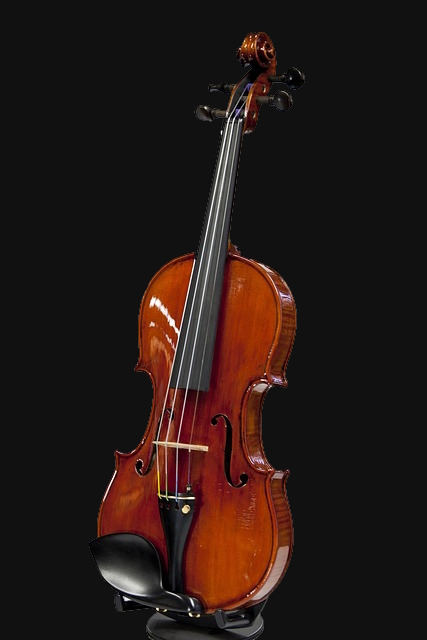
At its core, a violin is an acoustic amplification system with several key components:
- Strings: When bowed or plucked, the strings vibrate at specific frequencies determined by their length, tension, and mass.
- Bridge: This precisely shaped piece of maple transmits string vibrations to the body of the instrument.
- Body (Resonance Chamber): The hollow wooden body amplifies the vibrations and gives the violin its characteristic tone.
- Soundpost and Bass Bar: These internal components distribute vibrations throughout the instrument and support the structure against string tension.
- F-holes: These openings allow sound to escape from inside the resonance chamber and contribute to the violin’s projection.
The Physics of Violin Sound
The science behind violin acoustics is fascinating and complex:
- Resonance: The violin body is designed to resonate with the frequencies produced by the strings, amplifying certain frequencies while dampening others.
- Wood Properties: Different wood types and cuts have unique vibrational properties that affect timbre.
- Helmholtz Motion: The special stick-slip interaction between bow and string creates the characteristic violin sound.
- Wolf Tones: Natural resonance phenomena where certain notes cause problematic vibrations.
- Harmonics: The complex interaction of fundamental tones and overtones creates the violin’s rich sound palette.
Modern Advancements in Violin Acoustics
While traditional violin making relies heavily on craftsmanship passed down through generations, modern science has contributed to our understanding of violin acoustics:
- CT scanning of Stradivarius and Guarneri instruments to analyze their internal structures
- Spectral analysis to understand frequency response patterns of exceptional instruments
- Material science research on wood treatments and aging processes
- Computerized CNC carving that can reproduce precise graduations consistently
This blend of tradition and innovation informs many contemporary violin makers, with some embracing cutting-edge technology while others adhere strictly to traditional methods.
Best Violin Brands for Beginners
For those just starting their violin journey, finding an instrument that balances quality, playability, and affordability is crucial. Here are some of the most reputable brands that offer excellent starter violins:
Stentor

Stentor has established itself as a trusted name in the beginner violin market for good reason. Their instruments offer:
- Solid spruce tops and solid maple backs on many models
- Proper setup with correct bridge fitting and string height
- Consistent quality control across their production line
- Excellent value for money at the entry level
The Stentor Student II is particularly noteworthy as a beginner violin that offers better-than-average sound quality while remaining accessible. These instruments are often recommended by teachers for their reliable playability and are readily available on Amazon.
Kennedy Violins

Kennedy Violins has built a reputation for exceptional customer service and beginner instruments that exceed expectations:
- Solid wood construction (no laminated parts)
- In-house setup by professional luthiers
- Lifetime warranty against manufacturing defects
- Rigorously tested before shipping
Their Bunnel series offers particularly good value, with the Bunnel Premier standing out as an instrument that many students can use well into their intermediate years. Kennedy Violins maintains a strong presence on Amazon with well-reviewed instruments.
Yamaha

Drawing on their vast experience in musical instrument manufacturing, Yamaha’s student violins offer:
- Consistent quality across their product line
- Excellent intonation and string response
- Durable construction that withstands student handling
- Clear, focused tone quality
The Yamaha V3 series provides reliable instruments that maintain their value well and can often be resold when a student upgrades. Yamaha violins are available through Amazon and come with the reliability expected from this respected brand.
Fiddlerman

A newer brand that has quickly gained popularity, Fiddlerman offers:
- Instruments set up by experienced luthiers
- Hand-carved solid wood components
- Impressive accessories packages included with purchase
- Excellent customer support and follow-up
Their “Concert” model represents particularly good value in the beginner to early-intermediate range, with sound quality that surpasses many competitors at similar price points. Fiddlerman instruments can be found on Amazon with consistently positive customer feedback.
Cremona

Cremona violins offer solid construction and reliable playability for beginners:
- Consistent manufacturing standards
- Proper wood selection and treatment
- MENC (Music Educators National Conference) approved
- Good projection for student orchestras
The Cremona SV-175 and SV-500 models in particular offer excellent value for beginning students, with quality craftsmanship that supports proper technique development. These instruments are readily available on Amazon and often come with essential accessories.
Best Intermediate Violin Brands
As players advance, their ears become more discerning and their technical abilities demand more from their instruments. These brands offer excellent options for the progressing violinist:
Scott Cao

Scott Cao violins bridge the gap between student and professional instruments with remarkable success:
- Hand-carved by skilled craftspeople under Scott Cao’s direction
- Excellent tonewoods selected for superior resonance
- Oil-based varnishes that enhance tonal development
- Remarkable consistency across their various workshop series
The STV-850 and STV-950 models are particularly well-regarded for serious students advancing to more challenging repertoire. These instruments offer complex tonal possibilities that reward developing technique and can sometimes be found through select sellers on Amazon.
Ming Jiang Zhu

Ming Jiang Zhu’s workshop produces instruments that consistently punch above their weight class sonically:
- Workshop-made with close supervision by master luthiers
- Premium aged tonewoods selected for specific models
- European-influenced craftsmanship with Chinese efficiency
- Remarkable projection and clarity
The 909 series has earned particular acclaim for offering near-professional quality at intermediate prices. Many competition-level students perform successfully on these instruments. While not always available on Amazon, special listings occasionally appear, making them worth watching for.
Holstein

Holstein has earned a reputation for creating excellent intermediate instruments with distinctive character:
- Selected by professional players before distribution
- Antiqued varnish options that give a mature aesthetic
- Well-balanced response across all strings
- Excellent projection for orchestral settings
The Holstein Traditional model represents exceptional value for advancing students who perform frequently in ensembles and need an instrument with presence. These instruments can be found through select Amazon listings.
Eastman Strings

Eastman’s reputation for consistency and quality makes them a staple in the intermediate market:
- Workshop approach with individual luthiers responsible for specific components
- Hand-applied oil varnishes that enhance appearance and sound
- European tonewood selection with traditional seasoning
- Precise graduation for optimal sound production
The VL305 represents an excellent choice for advancing students, while their step-up Andreas Eastman models approach professional quality at intermediate prices. Eastman violins are available through Amazon with reliable quality control.
Klaus Clement
Klaus Clement instruments offer European craftsmanship at reasonable price points:
- German-designed with traditional specifications
- Hand-graduating of top and back plates
- Spirit varnishes that provide classic appearance and sound
- Consistently reliable setup and playability
These violins particularly excel in ensemble settings where clarity and projection are essential, making them popular among advancing students in youth orchestras and conservatory programs. Some Klaus Clement models can be found through specialized sellers on Amazon.
Professional and Premium Violin Brands
For advanced players, professional performers, and serious collectors, these brands represent the upper echelon of violin making today:
D Z Strad

D Z Strad represents the bridge between high-end workshop instruments and fully custom luthier-made violins:
- Master-grade tonewoods aged 10+ years
- Hand-graduation with traditional techniques
- Oil varnishes applied in multiple thin layers
- Individual testing and adjustment by concert performers
Their Model 701 offers extraordinary value in the professional category, while their Master Series instruments compete with European makers costing significantly more. D Z Strad maintains a presence on Amazon with select professional models available.
Siderovski
Jacob Siderovski’s instruments have gained tremendous respect among professional players for their:
- Exceptional craftsmanship with attention to historical models
- Distinctive voice with complex overtone structures
- Responsive playing characteristics across techniques
- Remarkable projection without harshness
Though produced in extremely limited quantities, these instruments represent the resurgence of American violin making at the highest levels. While rarely available on Amazon, occasional special listings may appear for the discerning professional.
Hiroshi Kono
Hiroshi Kono violins represent Japanese precision applied to traditional Italian designs:
- Meticulous attention to internal graduation
- Exceptional finish work with flawless varnish application
- Careful selection of tonewood with specific density characteristics
- Superior playability with optimized neck and fingerboard specifications
These instruments have gained particular favor among professional soloists who require both technical reliability and expressive range. Select models may occasionally be found through specialized Amazon sellers.
Samuel Zygmuntowicz
As one of today’s most sought-after living luthiers, Zygmuntowicz creates instruments that:
- Command waiting lists of several years
- Incorporate acoustic research into traditional designs
- Produce exceptional projection for concerto soloists
- Feature unparalleled attention to setup details
His instruments are played by some of the world’s leading soloists and demonstrate how contemporary makers can rival historic masterpieces. While not typically available through Amazon, they represent the pinnacle of modern violin making.
Historic Italian Masters
No discussion of premium violins would be complete without acknowledging the legendary makers whose instruments remain the gold standard:
- Antonio Stradivari: The most famous luthier in history, whose instruments regularly sell for millions of dollars
- Giuseppe Guarneri del Gesù: Known for powerful, robust instruments favored by virtuosos
- Giovanni Battista Guadagnini: Created exceptional instruments with distinctive tonal characteristics
- Nicolò Amati: Stradivari’s teacher and creator of refined, elegant instruments
While these historic instruments remain largely inaccessible except to top professionals and collectors, their designs continue to inform and inspire today’s makers at all levels.
Top Violin String Brands
The strings you choose have a profound impact on your violin’s sound, often transforming the same instrument’s voice completely. Here are the leading violin string brands and their characteristics, all readily available on Amazon:
Thomastik-Infeld

This Austrian company produces some of the most popular strings among professionals:
- Dominant: The industry standard for decades, providing a synthetic alternative to gut with warm, balanced sound
- Peter Infeld: Premium strings with exceptional complexity and nuance
- Vision: Brighter strings with quick response and excellent projection
- Spirit: Budget-friendly strings that maintain much of the Thomastik quality
Thomastik strings are known for their longevity and stability, maintaining their tone longer than many competitors. Find them on Amazon here.
Pirastro

With roots dating back to 1798, Pirastro offers an extensive range:
- Evah Pirazzi: Powerful, brilliant strings favored by soloists
- Obligato: Warmer, complex strings with gut-like qualities
- Wondertone Solo: Rich, full-bodied tone with excellent response
- Tonica: Reliable all-around strings at a more accessible price point
- Gold: Premium gut core strings with exceptional warmth
Pirastro excels in creating strings with distinctive character, allowing players to customize their sound precisely. Find them on Amazon here.
D’Addario

This American company offers excellent quality across price ranges:
- Helicore: Versatile steel strings suitable for multiple genres
- Kaplan: Premium strings with rich, complex tone
- Prelude: Durable student strings with good response
- Zyex: Synthetic core strings with excellent stability in changing conditions
D’Addario strings are particularly noted for their durability and consistency from set to set. Find them on Amazon here.
Warchal

This Slovakian company has rapidly gained popularity for innovation:
- Amber: Warm, complex strings with excellent projection
- Brilliant: Bright, responsive strings with quick articulation
- Karneol: Balanced strings with excellent durability
- Ametyst: Gut-like warmth with synthetic stability
Warchal has pioneered several innovations in string technology, including unique core materials and winding techniques. Find them on Amazon here.
Larsen

Danish precision characterizes Larsen strings:
- Tzigane: Rich, dark strings with powerful projection
- Original: Clear, focused strings with excellent balance
- Il Cannone: Powerful strings designed with soloist Augustin Hadelich
- Virtuoso: Warm, complex strings with quick response
Larsen strings are particularly favored by professional soloists for their reliability in performance situations. Find them on Amazon here.
Jargar
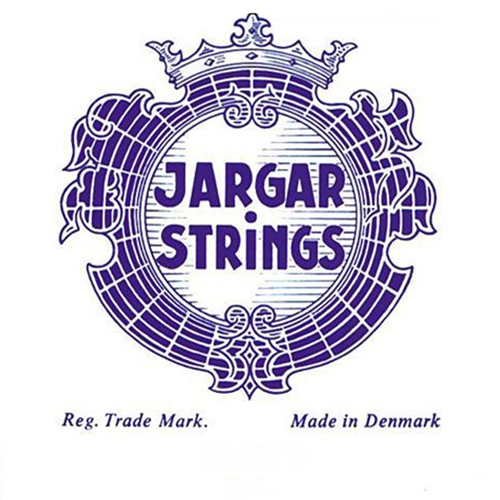
These Danish strings offer:
- Exceptional clarity and focus
- Strong projection without harshness
- Excellent tuning stability
- Balance across all four strings
The Jargar “Forte” is particularly popular among orchestral players who need projection without sacrificing tone quality. Find them on Amazon here.
Choosing the Right Strings
Selecting appropriate strings depends on multiple factors:
- Your violin’s inherent characteristics: Brighter violins may benefit from warmer strings, while darker instruments might need brighter strings for balance
- Playing environment: Certain strings perform better in humidity or temperature extremes
- Musical genre: Different styles may demand different tonal characteristics
- Technical preferences: Response speed, tension, and feel under the fingers vary significantly between brands
Many violinists keep multiple sets of strings to switch according to repertoire demands or seasonal changes. Experimentation is key to finding your perfect match.
Understanding Violin Costs
Violin pricing spans an extraordinary range, from quality student instruments to million-dollar antiques. Understanding what drives these costs helps in making informed purchasing decisions.
Factors Affecting Violin Prices
Multiple elements contribute to a violin’s market value:
Craftsmanship Level
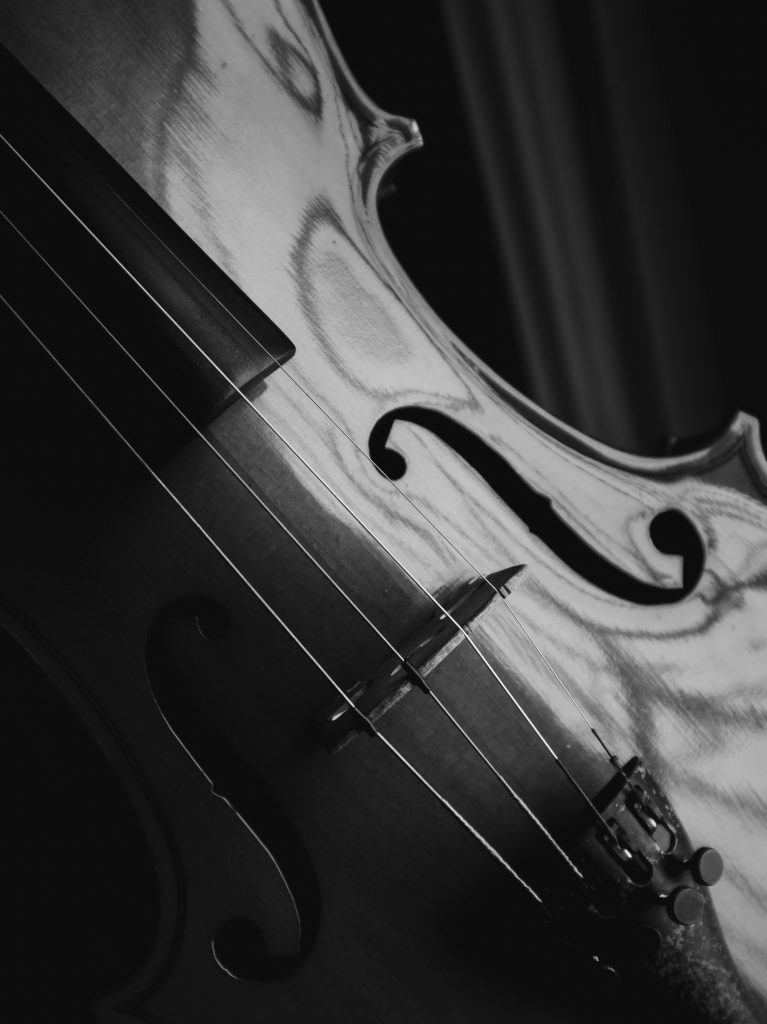
- Hand-carved vs. machine-made components
- Individual luthier vs. workshop vs. factory production
- Precision of graduations and fittings
- Quality of finish work and varnish application
Materials
- Age and quality of tonewoods
- Origin of wood (European vs. Asian sources)
- Type of accessories (pegs, tailpiece, chinrest)
- Quality of varnish ingredients
Maker Reputation
- Historic importance of the luthier
- Competition record of the maker
- Notable musicians playing similar instruments
- Critical reception of the maker’s work
Age and Provenance
- Historical significance
- Documentation of ownership history
- Condition relative to age
- Authentication by experts
Sound Quality
- Projection capabilities
- Tonal complexity
- Even response across strings
- Playability characteristics
Price Categories
While specific prices fluctuate with market conditions, violin pricing generally falls into these categories:
Beginner Violins
Student instruments designed for new players, offering reasonable playability and sound at accessible prices. These violins typically feature some hand-finishing and quality control to ensure proper playability.
Intermediate Violins
Step-up instruments for advancing students who require better tonal qualities and playability. These are often workshop-made with more hand-craftsmanship than beginner models.
Advanced Student/Semi-Professional Violins
High-quality instruments suitable for conservatory students and semi-professional players. These violins feature significant hand-craftsmanship and carefully selected materials.
Professional Violins
Instruments made by established contemporary luthiers or fine older instruments suitable for professional orchestral players and soloists. These violins offer distinctive voice and excellent playability.
Premium Collector Violins
Investment-grade instruments by historically significant makers or exceptional contemporary luthiers. These violins combine artistic, historical, and acoustic value.
Value Considerations
When evaluating violin costs, consider:
- Resale potential: Better instruments typically maintain value better than beginner models
- Insurance costs: Valuable instruments require appropriate coverage
- Maintenance requirements: Higher-end instruments may need more specialized care
- Long-term musical goals: Investing in a better instrument earlier can provide better growth potential
Rental and Financing Options
Many players begin with:
- Rent-to-own programs that apply payments toward purchase
- Instrument loans from foundations or music schools
- Fractional payment plans offered by violin shops
- Trade-up guarantees that protect initial investments
For growing students, renting fractional sizes often makes more financial sense than purchasing multiple instruments through growth stages.
Choosing the Right Violin for Your Needs
Selecting the perfect violin involves balancing multiple considerations beyond brand name alone:
Assessing Your Current Level
Be honest about where you are in your violin journey:
- Beginner: Focus on playability and durability; tone is secondary
- Intermediate: Seek balanced performance across all technical areas
- Advanced: Look for instruments that inspire and expand your expressive range
- Professional: Consider instruments that meet specific performance demands
Purchasing far beyond your current level rarely accelerates progress and may lead to disappointment if you lack the technique to draw out the instrument’s potential.
Considering Your Playing Style

Different musical genres and playing techniques may suggest different instrument characteristics:
- Classical solo repertoire: Instruments with projection, clarity, and expressive range
- Orchestral playing: Instruments with blend capability and defined articulation
- Chamber music: Instruments with transparency and balanced response
- Folk/fiddle styles: Often favor instruments with quick response and bright character
- Jazz/improvisational: May benefit from instruments with flexibility across techniques
While a truly great violin can adapt to multiple styles, many players prefer instruments optimized for their primary musical focus.
Physical Considerations
The violin should fit your physical characteristics:
- Neck shape and thickness: Should accommodate your hand size comfortably
- Weight distribution: Balanced instruments reduce fatigue during long sessions
- Body dimensions: Traditional measurements may need adjustment for player comfort
- Setup specifications: String height and spacing should match your technical approach
These factors significantly impact playability and can be as important as tonal qualities in your selection process.
Long-term Investment Thinking
Consider the future when making violin purchasing decisions:
- How long do you expect to play this instrument before upgrading?
- Does the violin have good resale potential if your needs change?
- Are you seeking an instrument that will appreciate in value over time?
- Would you benefit more from investing in a better bow rather than a better violin?
Some players prefer to purchase the best instrument they can afford immediately, while others follow a progressive upgrade path as their skills develop.
Trial Period Importance
Never purchase a violin without a proper trial period:
- Play the instrument in different acoustic environments
- Have teachers or professional players evaluate it objectively
- Compare it directly with other instruments in its price range
- Test it with different string brands to understand its adaptability
Most reputable dealers offer 7-14 day trial periods, and many online retailers now provide similar programs with return shipping guarantees.
Violin Accessories Worth Considering
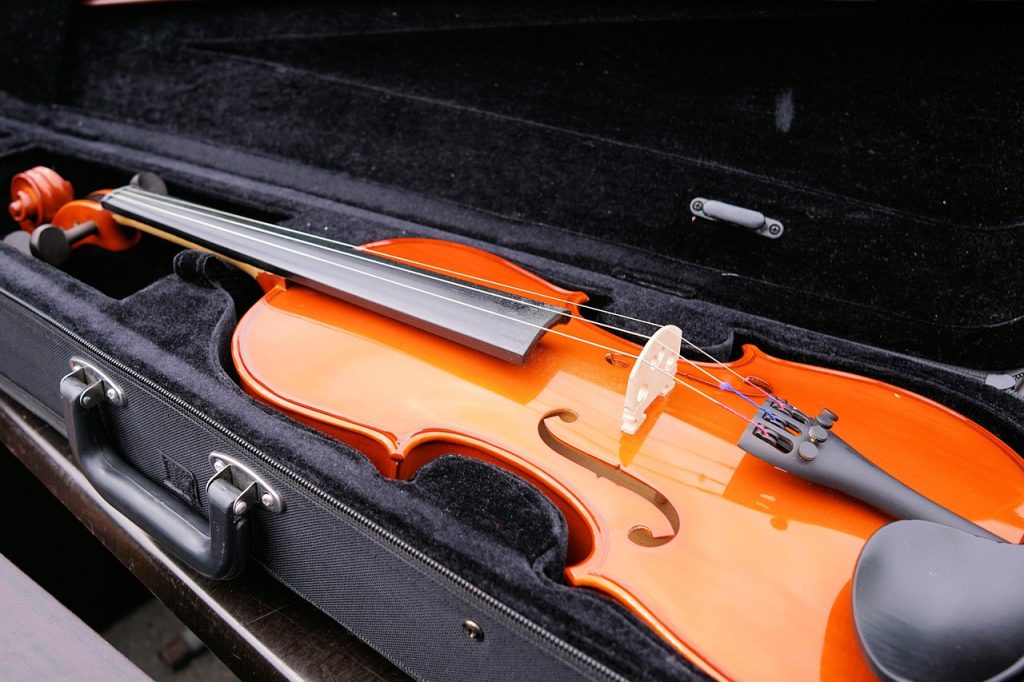
The right accessories can dramatically enhance your violin experience:
Bows
A quality bow is as important as the violin itself:
- Materials: Pernambuco, carbon fiber, and Brazilwood offer different performance characteristics
- Weight and balance: Affects playing technique and sound production
- Responsiveness: Determines articulation capabilities and dynamic range
- Brands to consider: Coda, JonPaul, Holstein, Arcus, and Sartory (antique)
Many violinists own multiple bows for different musical contexts, just as they might own multiple violins.
Cases
Protecting your investment requires an appropriate case:
- Hard shell cases: Maximum protection for valuable instruments
- Shaped cases: Excellent security with reduced weight
- Suspension cases: Superior protection against impacts and temperature changes
- Brands to consider: BAM, Musafia, Gewa, and Jakob Winter
Consider both protection level and carrying comfort when selecting a case, especially if you travel frequently with your instrument.
Shoulder Rests
Proper support enhances both comfort and technique:
- Contoured rests: Kun, Wolf, and Bonmusica offer anatomical designs
- Minimalist options: Playonair and Acoustifoam provide subtle support
- Premium choices: Kreddle and Performa offer adjustability and premium materials
Finding the right shoulder rest often requires experimentation, as physical proportions and playing style significantly impact comfort.
Chinrests
Often overlooked but crucial for comfort:
- Center-mounted: Traditional placement over the tailpiece
- Side-mounted: Shifted toward the left for different neck lengths
- Hypoallergenic options: Important for players with metal sensitivities
- Height and contour: Should accommodate your jaw and neck comfortably
Custom-fitted chinrests from specialists like Wittner or Wave can resolve many playing discomfort issues.
Rosin
Different rosins affect bow response and sound:
- Light rosins: Hillyer, Melos Light, and Pirastro Goldflex for summer use and smooth playing
- Dark rosins: Andrea, Bernardel, and Pirastro Obligato for winter conditions and more grip
- Specialty rosins: Baker’s, Leatherwood, and Liebenzeller with customized formulations
Experimenting with different rosins is an affordable way to modify your sound without changing instruments.
Practice Tools
Accessories that enhance learning:
- Electronic tuners: Korg, Snark, and D’Addario offer reliable options
- Mutes: Ultra, Tourte, and rubber practice mutes reduce sound for private practice
- Fingering tapes: Removable guides for beginning students
- Humidifiers: Essential for protecting wooden instruments in dry environments
Strategic accessory selection can significantly enhance practice efficiency and instrument longevity.
Caring for Your Violin
Proper maintenance ensures your instrument’s longevity and optimal performance:
Daily Care Routine
Establish these habits for general maintenance:
- Wiping down the instrument: Remove rosin dust after each playing session
- Loosening the bow: Release tension when not playing
- Checking pegs and fine tuners: Address any slipping or sticking
- Inspecting the bridge position: Ensure it remains properly aligned
These simple practices prevent many common issues and preserve your instrument’s condition.
Humidity Control
Wood instruments require stable humidity:
- Optimal range: 40-60% relative humidity
- Humidifiers: Case humidifiers or room humidifiers in dry environments
- Hygrometers: Monitoring devices to track conditions
- Seasonal awareness: Heating systems in winter often create dangerous dryness
Humidity-related damage represents one of the most common and costly repair categories for violins.
Professional Maintenance
Regular professional attention includes:
- Soundpost adjustments: Fine-tuning the internal acoustics
- Bridge fitting: Ensuring optimal contact and height
- Seam checks: Preventing open seams from worsening
- Fingerboard planing: Addressing wear patterns that affect playability
- Peg fitting: Ensuring smooth tuning operation
Establishing a relationship with a trusted luthier provides peace of mind and ensures your instrument receives appropriate care.
String Replacement Strategy
Maintain optimal sound with proper string care:
- Replacement frequency: Professional players change strings every 3-6 months
- Rotation system: Change strings one at a time to maintain tension balance
- Warning signs: Dull sound, difficulty tuning, or visible unwinding indicate replacement needs
- String cleaning: Wiping strings after playing extends their life
Different strings age at different rates, with the A and E typically wearing out before the D and G.
Insurance Considerations
Protect your investment appropriately:
- Specialized insurance: Companies like Clarion and Heritage offer instrument-specific policies
- Documentation: Maintain photographs and appraisals
- Coverage verification: Ensure protection extends to all common playing situations
- International coverage: Essential for traveling musicians
Standard homeowner’s policies often provide insufficient coverage for valuable instruments, particularly regarding depreciation calculations.
FAQ: Common Questions About Violins
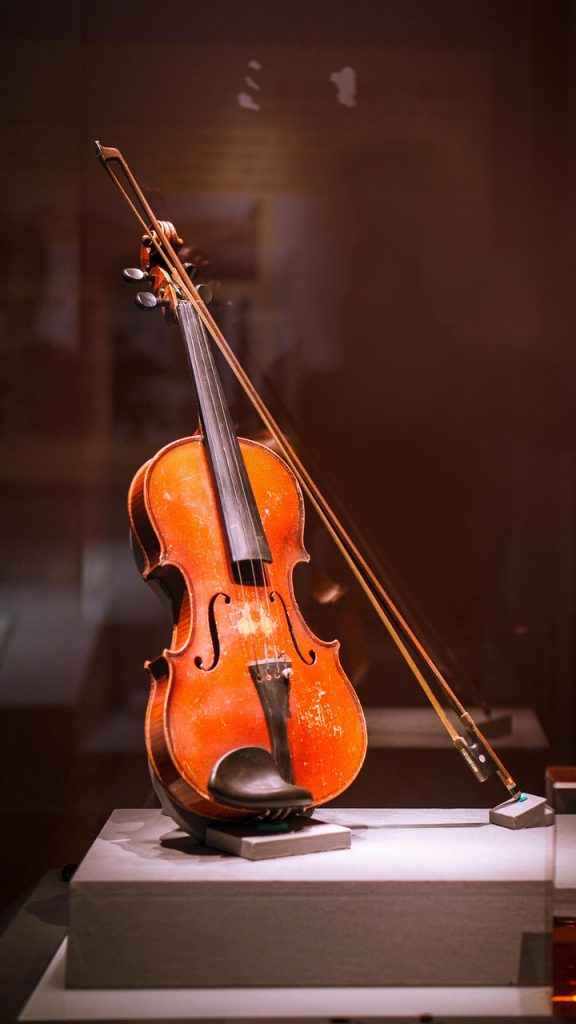
How do I know when it’s time to upgrade my violin?
Consider upgrading when:
- You consistently reach the tonal limitations of your current instrument
- Technical advances in your playing demand better response
- Your teacher recommends an upgrade based on your progress
- You’re entering more serious performance or competition environments
Many players find that upgrading at major skill transition points provides the most satisfaction and value.
Are older violins always better than new ones?
Not necessarily. While some older instruments benefit from wood aging and playing-in effects, many contemporary makers produce instruments that rival or exceed vintage violins in tonal quality. Age alone is not a reliable indicator of quality; craftsmanship, materials, and setup have far greater impact.
How much should I spend on my first “serious” violin?
This depends greatly on your commitment level, financial resources, and long-term goals. Many teachers recommend investing in the best instrument you can reasonably afford without financial strain, as better instruments generally inspire more practice and faster progress. For many advancing students, this represents a significant but manageable investment.
Can I try before I buy when purchasing online?
Many reputable online violin retailers now offer in-home trial programs with money-back guarantees. These typically allow 7-14 days to evaluate the instrument, with return shipping covered if you’re not satisfied. This approach has made quality instruments more accessible to players without local violin shops.
How do I know if a violin is properly set up?
Look for these indicators of proper setup:
- Bridge standing perpendicular to the top with feet flush against the wood
- Strings clearing the fingerboard at appropriate heights
- Pegs turning smoothly without slipping or sticking
- Straight, centered soundpost visible through the f-hole
- Even string spacing at bridge and nut
When in doubt, have a teacher or luthier evaluate the setup before purchase.
Are carbon fiber violins worth considering?
For certain situations, carbon fiber instruments offer compelling advantages:
- Extreme durability and stability in changing conditions
- Consistent performance in outdoor settings
- Resistance to humidity and temperature damage
- Modern aesthetic appeal
While they may lack some of the tonal complexity of fine wooden instruments, top carbon fiber violins like those from Mezzo Forte and Luis and Clark provide excellent alternatives for specific playing environments.
How often should violin strings be changed?
This depends on playing frequency and personal standards:
- Professional performers: Every 1-3 months
- Serious students: Every 3-6 months
- Casual players: Every 6-12 months
Watch for tonal deterioration, difficult tuning, visible unwinding, or discoloration as indicators that replacement is needed.
Is it better to rent or buy a beginner violin?
For young children who will outgrow fractional sizes, renting often makes more financial sense. For older beginners who will start with a full-size instrument, purchasing provides better long-term value if there’s commitment to continue playing. Many shops offer rent-to-own programs that provide flexibility while building equity toward ownership.
Can I mix different brands of violin strings?
Yes, and many professionals do exactly this to achieve their ideal tonal balance. Common combinations include:
- Different brands for A and E vs. D and G
- Maintaining the same core material across brands for consistency
- Selecting specific strings from different makers for their individual qualities
Experimentation often leads to discovering your violin’s optimal string combination.
How much does bow quality affect my sound?
Significantly. The bow represents approximately 50% of sound production capability, affecting:
- Articulation clarity and variety
- Dynamic range and control
- Tonal colors and textures
- Playing comfort and technique development
Many teachers recommend investing in bow quality nearly as much as violin quality, especially for advancing players.
Conclusion
The world of violins offers remarkable depth and variety, from quality student instruments to rare masterpieces. Finding the right violin involves understanding not just brands and prices, but the complex interplay of craftsmanship, materials, playability, and sound that defines each instrument’s character.
Whether you’re selecting your first violin or adding to a collection of fine instruments, approaching the process with knowledge and patience pays dividends. The perfect violin for you exists at the intersection of your playing level, stylistic preferences, physical requirements, and budget constraints.
Remember that even the finest violin requires proper setup, maintenance, and accessories to reveal its full potential. Building a relationship with knowledgeable teachers, luthiers, and dealers creates a support network that enhances your violin journey.
As you explore the options available, take time to play many instruments, listen critically, and trust your instincts. The right violin doesn’t just produce beautiful sound—it inspires you to practice, creates joy in playing, and becomes a trusted partner in your musical expression.
We hope this guide has illuminated the fascinating world of violin brands and helped you navigate the complex decisions involved in finding your ideal instrument. May your search lead you to a violin that brings both musical satisfaction and the distinctive pleasure that comes from playing a well-crafted instrument perfectly suited to your needs.
Disclaimer: As an Amazon Associate, I earn from qualifying purchases. All product recommendations are based on research and experience rather than direct testing of every instrument mentioned. Specific prices have been omitted as they vary by retailer and change over time.

